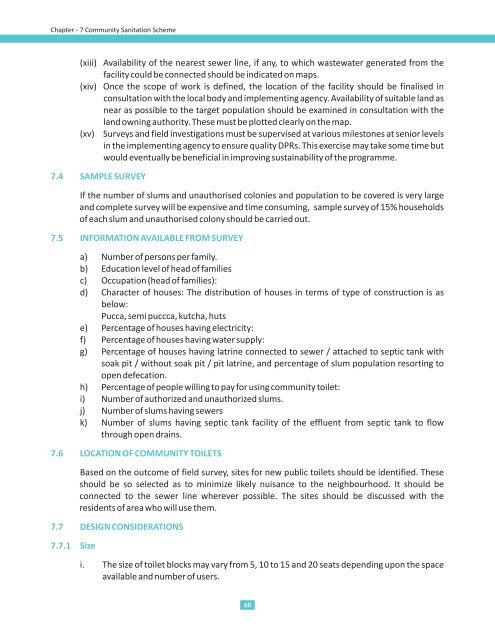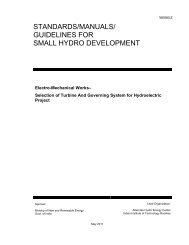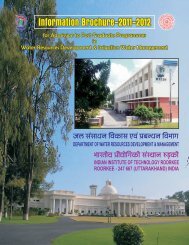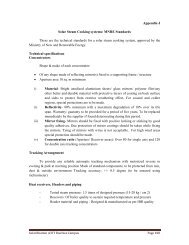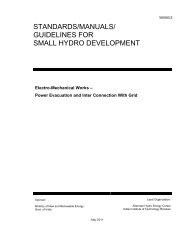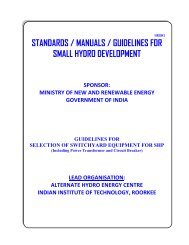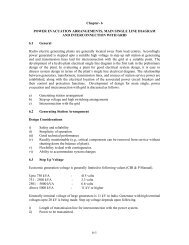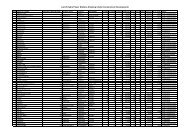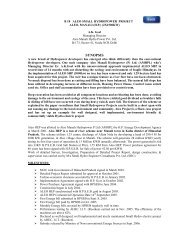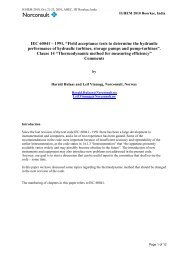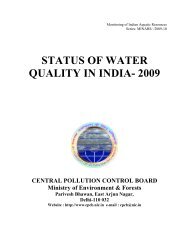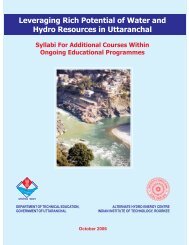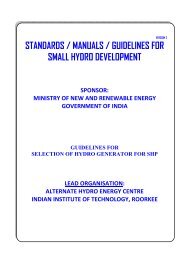annexures - Indian Institute of Technology Roorkee
annexures - Indian Institute of Technology Roorkee
annexures - Indian Institute of Technology Roorkee
You also want an ePaper? Increase the reach of your titles
YUMPU automatically turns print PDFs into web optimized ePapers that Google loves.
Chapter - 7 Community Sanitation Scheme(xiii) Availability <strong>of</strong> the nearest sewer line, if any, to which wastewater generated from thefacility could be connected should be indicated on maps.(xiv) Once the scope <strong>of</strong> work is defined, the location <strong>of</strong> the facility should be finalised inconsultation with the local body and implementing agency. Availability <strong>of</strong> suitable land asnear as possible to the target population should be examined in consultation with theland owning authority. These must be plotted clearly on the map.(xv) Surveys and field investigations must be supervised at various milestones at senior levelsin the implementing agency to ensure quality DPRs. This exercise may take some time butwould eventually be beneficial in improving sustainability <strong>of</strong> the programme.7.4 SAMPLE SURVEYIf the number <strong>of</strong> slums and unauthorised colonies and population to be covered is very largeand complete survey will be expensive and time consuming, sample survey <strong>of</strong> 15% households<strong>of</strong> each slum and unauthorised colony should be carried out.7.5 INFORMATION AVAILABLE FROM SURVEYa) Number <strong>of</strong> persons per family.b) Education level <strong>of</strong> head <strong>of</strong> familiesc) Occupation (head <strong>of</strong> families):d) Character <strong>of</strong> houses: The distribution <strong>of</strong> houses in terms <strong>of</strong> type <strong>of</strong> construction is asbelow:Pucca, semi puccca, kutcha, hutse) Percentage <strong>of</strong> houses having electricity:f) Percentage <strong>of</strong> houses having water supply:g) Percentage <strong>of</strong> houses having latrine connected to sewer / attached to septic tank withsoak pit / without soak pit / pit latrine, and percentage <strong>of</strong> slum population resorting toopen defecation.h) Percentage <strong>of</strong> people willing to pay for using community toilet:i) Number <strong>of</strong> authorized and unauthorized slums.j) Number <strong>of</strong> slums having sewersk) Number <strong>of</strong> slums having septic tank facility <strong>of</strong> the effluent from septic tank to flowthrough open drains.7.6 LOCATION OF COMMUNITY TOILETSBased on the outcome <strong>of</strong> field survey, sites for new public toilets should be identified. Theseshould be so selected as to minimize likely nuisance to the neighbourhood. It should beconnected to the sewer line wherever possible. The sites should be discussed with theresidents <strong>of</strong> area who will use them.7.7 DESIGN CONSIDERATIONS7.7.1 Sizei. The size <strong>of</strong> toilet blocks may vary from 5, 10 to 15 and 20 seats depending upon the spaceavailable and number <strong>of</strong> users.60


